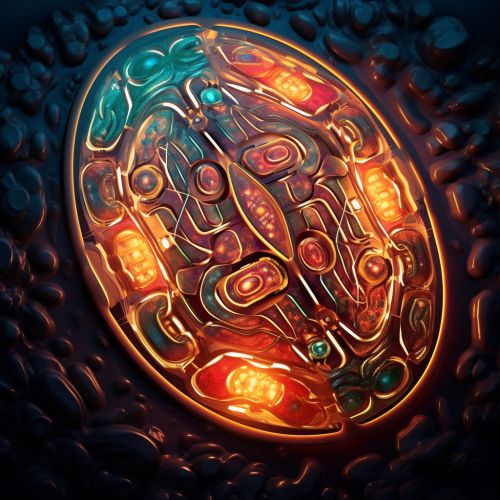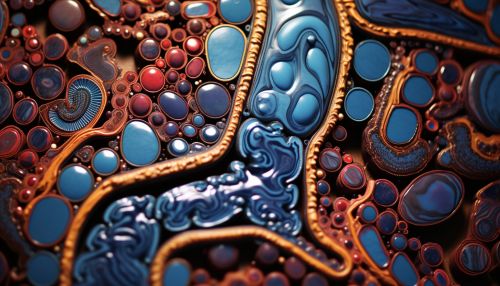Mitochondria
Introduction
Mitochondria are cellular structures that function as the powerhouses of the cell. They are double-membraned organelles that are found in the cytoplasm of almost all eukaryotic cells and are responsible for generating most of the cell's supply of adenosine triphosphate (ATP), the primary source of cellular energy.


Structure and Composition
Mitochondria are typically between 0.75 and 3 micrometers in diameter and have a unique structure that is critical to their role in cellular energy production. They are composed of two main compartments: the inner and outer mitochondrial membranes.
Outer Mitochondrial Membrane
The outer mitochondrial membrane is a phospholipid bilayer that contains proteins called porins. These porins allow molecules 5000 Daltons or smaller to freely diffuse in and out of the organelle.
Inner Mitochondrial Membrane
The inner mitochondrial membrane, also a phospholipid bilayer, is highly convoluted and forms fold-like structures known as cristae. The cristae increase the surface area of the inner membrane, enhancing its ability to produce ATP. This membrane is impermeable to most molecules, but it contains transport proteins that regulate the movement of substances in and out of the mitochondrial matrix.
Function
Mitochondria are primarily involved in energy production, but they also play roles in other cellular processes such as cell cycle control, cell differentiation, and cell death.
Energy Production
The main function of mitochondria is to produce ATP through the process of oxidative phosphorylation. This process involves the electron transport chain, a series of protein complexes in the inner mitochondrial membrane that transfer electrons from electron donors to electron acceptors via redox reactions. This transfer of electrons is coupled with the transfer of protons (H+ ions) across the membrane, creating a proton gradient. The energy from this gradient is used to form ATP from adenosine diphosphate (ADP) and inorganic phosphate (Pi) in a process known as chemiosmosis.
Other Functions
In addition to energy production, mitochondria are involved in other cellular processes. They play a crucial role in the regulation of the cell cycle, including cell growth and cell death. They also contribute to cell differentiation, the process by which a cell changes from one type to another, usually becoming more specialized.
Mitochondrial DNA
Mitochondria are unique among the organelles in that they have their own DNA, known as mitochondrial DNA (mtDNA). This circular DNA molecule is maternally inherited and encodes for 13 proteins, 22 tRNAs, and 2 rRNAs. The presence of mtDNA supports the endosymbiotic theory, which suggests that mitochondria were once free-living bacteria that were engulfed by a primitive eukaryotic cell.
Mitochondrial Diseases
Mitochondrial diseases are a group of disorders caused by dysfunctional mitochondria. They are often caused by mutations in mtDNA or in nuclear genes that code for mitochondrial components. These diseases can affect any part of the body and can present at any age. Symptoms can range from mild to severe and can include muscle weakness, neurological problems, cardiac disease, and liver disease.
